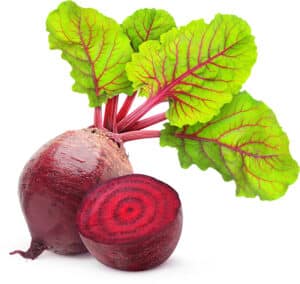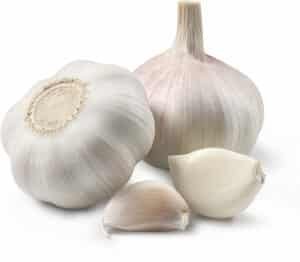
RIGHT: Drew Michael Hemler, registered dietitian in private practice in Syracuse, Buffalo and Toronto.
Eating right represents one of the pillars of good health and longevity. As part of an overall healthful diet, every older adult should consider including these foods (assuming they’re not contraindicated for any medication or health issues they’re experiencing).
Protein
 It’s easy to slip into the habit of fixing snacks instead of meals when living alone. But many times, these lack nutrients, including protein.
It’s easy to slip into the habit of fixing snacks instead of meals when living alone. But many times, these lack nutrients, including protein.
“Lean protein is my primary recommendation for older adults,” said Drew Michael Hemler, registered dietitian in private practice in Syracuse. “Older adults tend to reduce their intake. Foods like chicken, turkey, fish, legumes, and soy products help maintain muscle mass and their low sources of saturated fat, which helps improve cardiovascular function.”
Eggs, nuts, seeds and dairy products also provide protein.
Water
 While not technically a nutrient, water is vital for good health.
While not technically a nutrient, water is vital for good health.
“Fluid intake is chronically low among the older age population,” Hemler said. “This can be from beverages, but we can also look to fruits and vegetables, which have a high water content.”
He added that drinking enough fluids helps with digestion, reduces constipation and boosts cognitive function and overall energy. Fluids also help balance digestion when improving fiber intake.
To avoid bathroom emergencies in the night, plan more fluid intake in the morning and afternoon and consume less in the evening, especially before bedtime.
Omega 3
 These help to promote the health of the brain and joints. Hemler noted that fatty fish, nuts, seeds and olive oil are great sources of omega-3s.
These help to promote the health of the brain and joints. Hemler noted that fatty fish, nuts, seeds and olive oil are great sources of omega-3s.
“Many nuts have plant stanols and sterols that help reduce cholesterol,” Hemler said.
Beets
 “Beets contain high levels of nitrates which can help promote cardiovascular and gut health as well as increase energy levels,” said Gregory Faughnan, physician and board certified in primary care at St. Joseph’s Physicians Primary Care in Syracuse.
“Beets contain high levels of nitrates which can help promote cardiovascular and gut health as well as increase energy levels,” said Gregory Faughnan, physician and board certified in primary care at St. Joseph’s Physicians Primary Care in Syracuse.
Produce
 Include in your table’s vegetable line-up Brussels sprouts, broccoli, and cabbage. Faughnan said that these “are great sources of fiber, vitamins and antioxidant phytochemicals.
Include in your table’s vegetable line-up Brussels sprouts, broccoli, and cabbage. Faughnan said that these “are great sources of fiber, vitamins and antioxidant phytochemicals.
“These are blanket statements,” he added. “Always ask your primary care provider regarding nutritional advice based on your own individual medical conditions and medications.”
Greens
 Kale, spinach, Swiss chard, arugula, beet greens, bok choy, collard greens, mustard greens, turnip greens, cilantro, parsley and Romaine are all examples of nutrient-packed greens. Faughnan said that these “are high in essential vitamins and minerals as well as fiber and other nutrients to help support immune health. They can also be a good source of iron.”
Kale, spinach, Swiss chard, arugula, beet greens, bok choy, collard greens, mustard greens, turnip greens, cilantro, parsley and Romaine are all examples of nutrient-packed greens. Faughnan said that these “are high in essential vitamins and minerals as well as fiber and other nutrients to help support immune health. They can also be a good source of iron.”
Although green in color, iceberg lettuce isn’t as packed with nutrients as the darker greens.
Blueberries
 “Blueberries have high levels of antioxidants and natural compounds called phytochemicals which promote both brain and bone health,” Faughnan said.
“Blueberries have high levels of antioxidants and natural compounds called phytochemicals which promote both brain and bone health,” Faughnan said.
Whether frozen or fresh, berries such as raspberries, blackberries, or strawberries offer many nutrition benefits.
Garlic
 Tasty in numerous dishes, garlic also “promotes cardiovascular health and can also help fight inflammation,” Faughnan said.
Tasty in numerous dishes, garlic also “promotes cardiovascular health and can also help fight inflammation,” Faughnan said.
Honey
 “Honey has high concentrations of natural enzymes that can boost your immune system and aid in digestion,” Faughnan said.
“Honey has high concentrations of natural enzymes that can boost your immune system and aid in digestion,” Faughnan said.
Although high in calories, it’s a better choice as a sweetener than processed sugar.
Dark Chocolate
 A tasty treat that treats you well, dark chocolate (at least 70% cacao) “contains high levels of polyphenols and flavonoids which act as antioxidants promoting good brain and cardiovascular health,” Faughnan said.
A tasty treat that treats you well, dark chocolate (at least 70% cacao) “contains high levels of polyphenols and flavonoids which act as antioxidants promoting good brain and cardiovascular health,” Faughnan said.
Consume only a standard portion size, as its calories add up fast.
Getting More Nutrition
 Carolyn Allen, registered dietitian and owner of Rural Roots Nutrition in Manlius, offered a few tips for increasing nutrition.
Carolyn Allen, registered dietitian and owner of Rural Roots Nutrition in Manlius, offered a few tips for increasing nutrition.
Need more protein? Allen suggested “incorporating more protein into snacks, like apple and cheese or nut butter. Or hummus and veggies or whole wheat pita chips.”
She added that a can of rinsed beans could add more protein to a soup, casserole or salad.
Need more fluids? Try hydrating foods. Allen mentioned produce, soup, Jell-O, pudding, popsicles, ice cream, frozen yogurt and sherbet.
“Changing the temperature of the liquid can help people drink more,” Allen said. “Some like it ice cold. Use a different type of cup or bottle.”
Hate wasting food? Try single-serving fruits and vegetables.
“They have smaller portion sizes of frozen and canned options,” Allen said.
Steamed bags of frozen vegetables serve around three portions, which isn’t overwhelming.
Hate cooking?
Allen said that programs such as Meals on Wheels can help “incorporate more nutrient dense foods. The milk and juice is in individual portion size and it is already prepared.”

